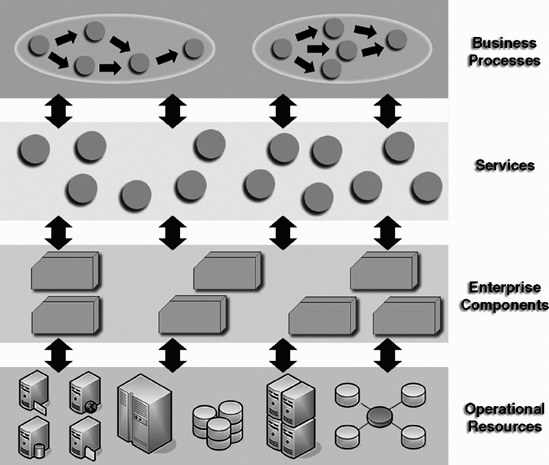1.3. DECONSTRUCTING SOA
No two service oriented enterprise architectures look the same. SOA is an architectural style with a handful of common elements and themes and myriad implementation strategies. A nominal, representative architecture can be identified in order to better understand SOA and "what it looks like." A reference diagram depicting the SOA layers is illustrated in Exhibit 1.2. This diagram will serve as a useful reference in this section and throughout the rest of the book. While any given implementation of SOA may be more or less complex than this model, this diagram provides a good starting place.
The layers illustrated in Exhibit 1.2 are as follows:[]
Operational resources. Comprised of existing systems, applications, and databases, the operational resources layer represents the legacy enterprise. Your customer relationship management (CRM), enterprise resource planning (ERP), and product life-cycle management (PLM) systems are good examples of operational resources. Some of these systems are commercial off-the-shelf (COTS), while others are homegrown, but all of them house valuable enterprise data and business logic. The services that are made available through an SOA leverage these existing investments and uncover new opportunities for utilizing these assets within a larger enterprise context.
Figure 1.2. SOA architectural layers

Enterprise components. Sitting ...
Get Service Oriented Architecture Field Guide for Executives now with the O’Reilly learning platform.
O’Reilly members experience books, live events, courses curated by job role, and more from O’Reilly and nearly 200 top publishers.

